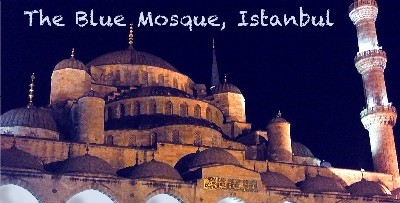
| Istanbul, Turkey: Xlnt For Sr Shopping & Sightseeing |
 |
 Guest Editor Ford M., Montreal, Canada: The exotic city has long been at the crossroads of European and Asian trade. Still today, the modern metropolis retains that blend of Eastern and Western cultures. Turkey has a long history of friendly relations with the U.S., a good tourist infrastructure and direct flights from the States. All combine with the exoticism of daily calls to prayer from the mosques, women in traditional dress and unique shopping and cuisine. There are great markets and traditional retail stores throughout Istanbul, but any serious shopper should experience the city's magical bazaars. Originally collections of tents along city streets, bazaars eventually evolved into covered, permanent structures. One of the world's top malls, Istanbul's Grand Bazaar is spectacular. It’s a city of commerce, an entire walled and covered region filled with stores. From its humble beginnings in the Byzantine era as a collection of caravan tents to today's city within a city, I find this to be one of the world's greatest shopping experiences. The total area is over three million square feet, and the entire bazaar is covered and walled in. It’s divided into neighborhoods, each offering a different type of product for sale. The basic categories are gold, silver, kilms and rugs, antiques, tourist souvenirs, metalwork, leather, textiles, fabrics and ceramics. The merchants aim all their prices high for tourists, so be sure to bargain hard. You may not get the lowest prices, but you’ll feel you’ve had a good time trying. For a break from haggling, there’s also an area of cafés and food shops. The Grand Bazaar is closed Sundays. Like the Grand Bazaar, the Spice Bazaar sees its share of tourists, and delivers a sensory taste and aroma experience. It's a large, L-shaped structure, filled mainly with spice and candy shops. Also known as the Egyptian Bazaar, this is a real hands-on experience. Each shop presents a new opportunity for tasting and/or smelling something exotic. In addition to spices and candy, there are other stalls selling cheese and other food products. The neighborhood behind the Spice Bazaar, called Eminonu, is also great to explore. It's not a formal covered bazaar, but the streets and area are filled with small shops selling household items, hardware, clothing and other items to locals. For a touristy, yet authentic Turkish lunch, we enjoyed Pandeli, 1 Eminonu/Fatih, above the Spice Bazaar. With views overlooking the Bosphorus, it's a perfect break during a day of shopping. An intimate shopping experience in the heart of Sultanahmet, the old city, the Arasta Bazaar is a fun, compact shopping experience. The area sits directly behind the Blue Mosque and was originally part of a vast Byzantine palace complex. The shops are all filled with tourist goods, as well as rugs, tiles, glass and other handicrafts. There’s a square with a café and shops around it. Unlike the Spice and Grand bazaars, this area is open on Sundays. For a real foodie experience, visit the Kadikoy Bazaar in the Asian area. It’s the city's fresh food, meat and fish market, and where you'll find Istanbul's top chefs stocking up. Unlike the touristy Grand or Spice bazaars, this is where locals buy food for their families. Quick meals are also delicious here. Just follow the crowd to any popular street stand for kebabs, sandwiches or fish. Istanbul is easily reached from many U.S. gateways, and also well-served by many international carriers. Turkish Airlines offers direct service from U.S. cities, including Los Angeles, New York, Chicago and Houston. Their Business Class service equals most carriers’ First Class experience, and each flight features on on-board chef. American citizens need a tourist visa to visit Turkey, but a e-visa is easily available online or at the airport upon arrival. |